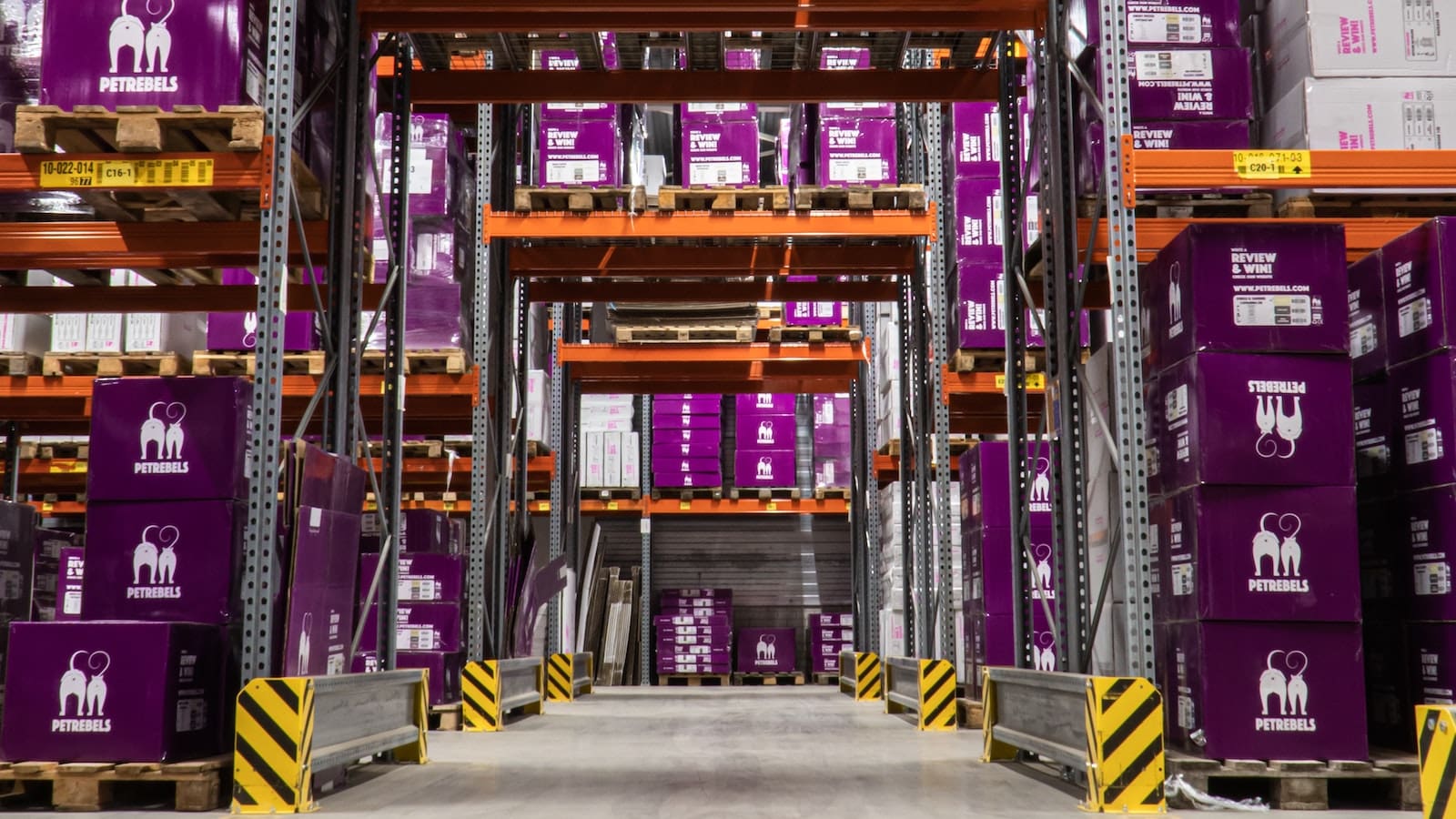Table of Contents
** Minutes
What is the difference between cycle counting and physical inventory counting?
Different cycle counting methods compared
Inventory cycle counting pros and cons
Best practices of inventory cycle counting
Learn why ShipBob should be a part of your inventory management efforts
Every business that sells physical products needs a robust inventory strategy to make sure that their products are accounted for and that their operations run smoothly. Accurate inventory tracking and optimised inventory positioning are required to maintain optimal inventory levels, improve picking efficiency, and enhance warehouse safety.
A good inventory strategy should also include a system for maintaining accurate inventory counts and preventing a wide range of issues related to under-stocking, fulfilment disruptions, revenue loss, and accounting challenges.
In this post, we take a closer look at the cycle count inventory management system and the pros and cons of cycle counting.
What is cycle counting?
Cycle counting is a system of accounting for inventory in which specific items are counted at a time in a cyclical schedule. Instead of having to constantly do a physical count of the entire inventory at once, the cycle count inventory process only focuses on several items at a time but is conducted on a regular basis.
As a result, inventory cycle count allows ecommerce companies to maintain accurate inventory counts without the need to pause their entire warehousing and fulfilment operations. This makes the cycle count inventory system ideal for large warehouses that store large quantities of products or a wide variety of SKUs.
What is the difference between cycle counting and physical inventory counting?
Cycle counting and physical inventory counting are both popular inventory audit procedures. While physical counting involves counting the entire inventory in stock at once, cycle counting focuses on specific items or areas in the warehouse at a time. As such, physical inventory counting is conducted less frequently whereas cyclical counting is performed at regular intervals for different items.
With physical inventory counting, the entire warehousing and fulfilment operations have to be put on pause to ensure accuracy. As a result, it can be time-consuming and disruptive for the business. Meanwhile, cyclical counting takes less time and is less disruptive because only select items or areas of the warehouse are focused on at one time.
Different cycle counting methods compared
There are several inventory cycle count procedures to choose from. We’ve outlined the pros and cons of each in order to help you understand each method and find the one that works best for your business.
Control group cycle counting
This method involves focusing on a small control group of inventory that’s counted frequently over a short period of time to detect issues in the technique.
Pros
- Fine-tunes your counting process
- Good option for those new to cycle counting
Cons
- Tends to be biased toward certain items
ABC cycle counting
This option involves categorizing your inventory into classes A, B, and C in order of value and then prioritising the highest-value and most popular items in your counting, which means they’re counted more frequently.
Pros
- Maintains healthy stock levels for popular and high-value items
- Ensures that you don’t miss out on high-value sales
Cons
- Higher potential for inaccuracies with class C items
- Unnecessary counts for certain items
Geographic counting
The geographic counting method involves rotating your inventory counts between smaller audit areas and focusing on specific areas at a time.
Pros
- Helps to identify problematic and vulnerable areas
- Good for optimising inventory positioning
Cons
- Potential for delays in counting certain items
Opportunity-based counting
In this method, an inventory count is conducted on items at certain stages in the logistics pipeline (i.e. when they’re received in your warehouse or when inventory dips below a certain level).
Pros
- Ability to identify errors and issues in a timely manner
- Helps to isolate inefficiencies at certain stages of the pipeline
Cons
- Potential for delays in counting certain items
How to do cycle counting
After choosing the best inventory cycle count procedure for your business, you can start your cycle counting process. Follow the steps below to get started.
Start with the essentials
First, decide on important details like the number of SKUs you want to work with for each counting cycle. This will largely depend on your available resources such as how many employees are available and how much time they have. Factors like counting frequency should also be well-established ahead of time.
Assess the current state of inventory
Since it’s important to begin your cycle count with an accurate database, take a look at the current state of your inventory. Review your records and data entry to make sure that everything is up-to-date. Moreover, it’s a good idea to conduct a physical inventory count before you start using a new counting system. This will help you generate a baseline level of accuracy to work with.
Start counting
Next, your counters should review your inventory records to check for quantities, locations, and descriptions. They should then compare the records to what’s physically on the shelves.
Track everything and investigate causes of problems
Make sure everything is tracked and properly recorded. If you identify any issues or inaccuracies during the count, look for patterns in order to get to the root cause of the problem.
Inventory cycle counting pros and cons
There are a number of reasons why inventory cycle counting has an advantage over other inventory audit methods. But that’s not to say that it doesn’t come with its own set of challenges. Here’s a quick look at the pros and cons of inventory cycle counting.
Pro: Better order fulfilment rates
Cycle counting causes minimal disruptions to your warehousing and fulfilment operations. Entire warehouses don’t have to be shut down for counting, allowing you to maintain the same fill rate as normal. As a result, you can continue fulfiling most orders even while counting is in progress for certain items, helping you achieve better order fulfilment rates.
Pro: Higher sales
You can also keep receiving orders since there are minimal disruptions to your operations. Cycle counting also allows you to replenish stock at regular intervals and maintain better on-shelf availability. These factors translate to higher sales for your business along with lower stockout costs.
Pro: Faster corrective measures
Since counting is conducted frequently, it allows you to detect errors quickly and take necessary corrective action to maintain inventory accuracy. As a result of faster corrective measures, you can also minimise errors in your inventory management while ensuring better order accuracy.
Pro: Improved customer experience
Cycle counting is an effective way to quickly identify any inaccuracies between your inventory records and your physical stock levels. As a result, you can quickly update your records while placing necessary reorders. This helps to prevent situations in which customers place an order for an out-of-stock item and have to wait for the item to be back in stock, helping to enhance the customer experience.
Con: Multiple locations
Inventory cycle counting is often carried out on specific product categories at a time. Often, these products are spread out across multiple locations in the warehouse. Having to move between these different locations can be a hassle, especially in large warehouses.
Con: Outstanding transactions
Although cycle counting doesn’t disrupt the entire operation, you still have to close transactions for the items you’re counting. If the count takes long, you could experience a buildup of outstanding transactions that may delay sales and cause customer frustration.
Best practices of inventory cycle counting
To make sure that you can avoid the challenges related to cycle counting, it’s crucial to follow the best practices below.
Have regular and frequent counts
It’s important to conduct inventory counts on a regular and frequent basis. This will ensure that all product categories or count slots are covered within a short period of time, which improves the chances of detecting issues on time and maintaining better accuracy across your entire inventory.
Focus on the right products
With the right cycle count method, you can focus on products that matter the most i.e. products that yield high returns and see significant demand. This allows you to maintain high accuracy rates for products that offer the highest value for your business.
Leverage technology for better efficiency and accuracy
Manual counting can be time-consuming and prone to error. It’s crucial that you leverage technology as much as possible to save time and mitigate human error. For starters, barcode scanning systems are a must-have as they speed up the counting process and prevent the need to manually log inventory. Moreover, it should be able to integrate seamlessly with a digital inventory management system that automatically records, analyses, and reconciles your inventory data.
Learn why ShipBob should be a part of your inventory management efforts
With the ability to manage all the physical aspects of your inventory and utilise advanced inventory management software, ShipBob streamlines your inventory counting process for you. When you leave inventory management to the professionals, you can enjoy better accuracy rates and increased efficiency.
Outsourced inventory management process
ShipBob lets you outsource your entire inventory management process, where you store your inventory at ShipBob’s fulfilment centres and leave everything to our warehouse professionals. That means you won’t have to handle the physical aspects of your ecommerce inventory and allow professionals to accurately count and manage your inventory.
This leaves less room for errors while significantly speeding up the process. As a result, you get to enjoy decreased order cycle time, which could subsequently improve your days sales in inventory. Moreover, it frees up your time so you can focus on the strategic aspects of your ecommerce business.
Automated inventory management software
By leveraging ShipBob’s proprietary software, you can automate a huge portion of your inventory management process. The software integrates with your ecommerce store so your inventory levels are automatically updated with your sales records. It also gives you real-time visibility into how your inventory is moving and how much inventory you have left.
You can set reorder points so you automatically get notified when your stock reaches a certain level. This helps you ensure better stock availability and avoid expensive stockout costs.
Cycle counts for improved inventory accuracy
Great customer experiences require great inventory management. One way to ensure inventory accuracy within the warehouse is through cycle counts, a proactive method of physically confirming that inventory counts match our records in ShipBob’s proprietary warehouse management system and your dashboard.
All fulfilment centres in ShipBob’s global network now have a proactive cycle count process to identify and fix inventory discrepancies. Cycle counts will be performed quarterly for all SKUs to verify all inventory attributes including total count, quality, and lot/expiration to ensure that no inventory issues impact your customers.
Inventory cycle count FAQs
Here are answers to the top questions about inventory cycle counts.
What is an inventory cycle count?
An inventory cycle count system is a method of counting inventory where you focus on specific items at a time and conduct counts on a cyclical basis.
How often should you cycle count inventory?
The frequency of your inventory cycle count varies depending on the number of SKUs you want to count in a year. You’ll have to spread out your SKUs appropriately across different count cycles.
How do you calculate the inventory cycle?
You can calculate the inventory cycle by calculating your annual cost of sales and dividing it by your average inventory level for the year. For example, let’s say you spent $50,000 to produce or procure the goods and your average inventory level amounted to $10,000 worth of parts. Then your inventory cycle is five.
What is the difference between cycle count and physical inventory?
Cycle count involves counting specific inventory items at frequent intervals whereas physical inventory count involves counting your entire inventory at once.



